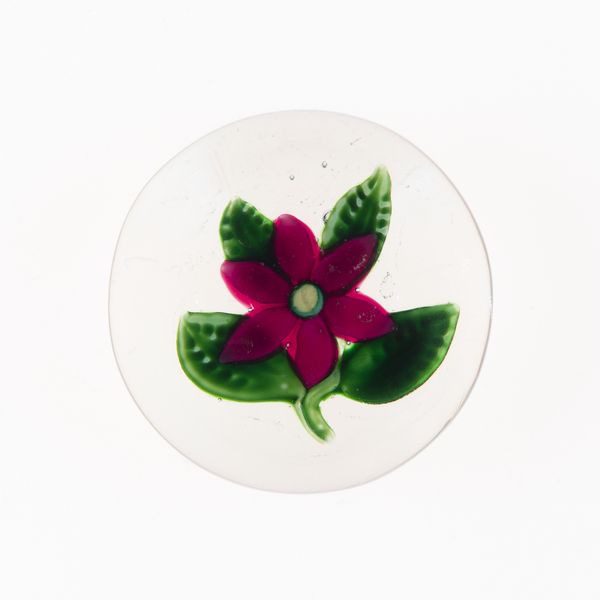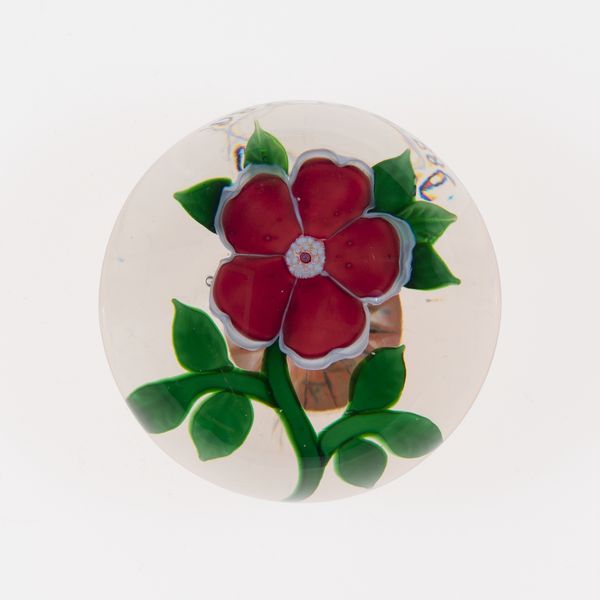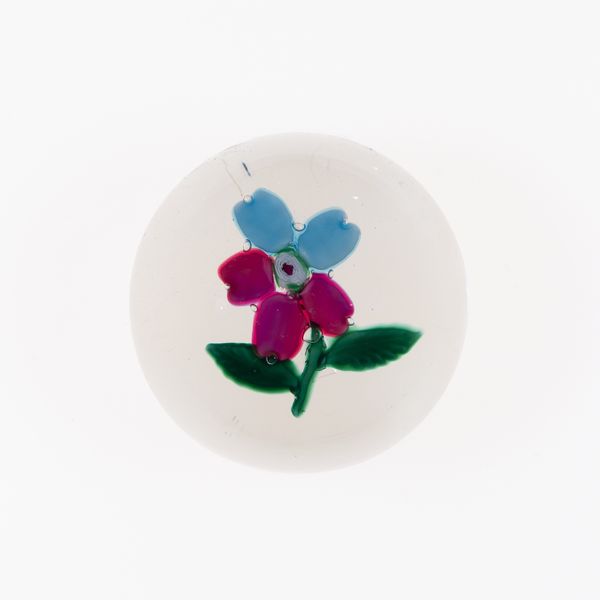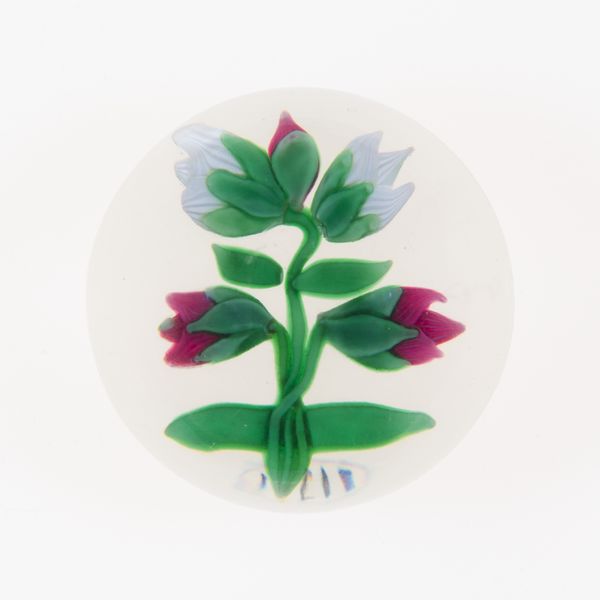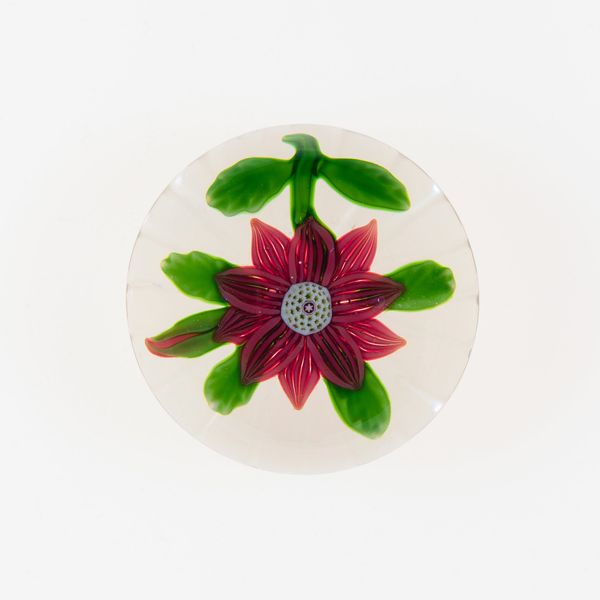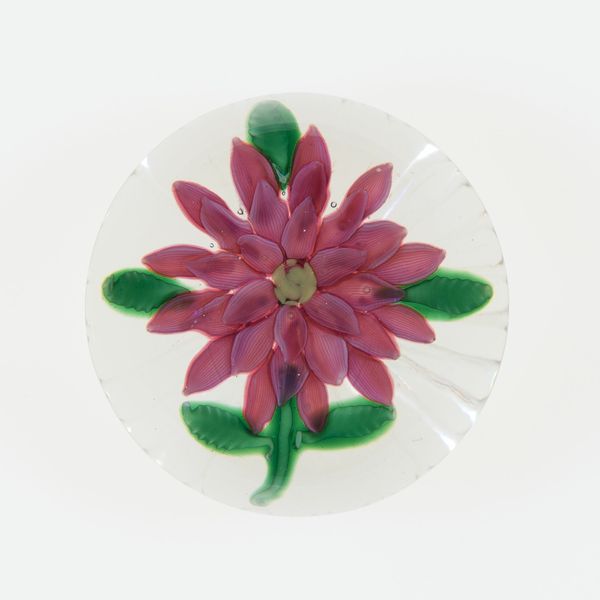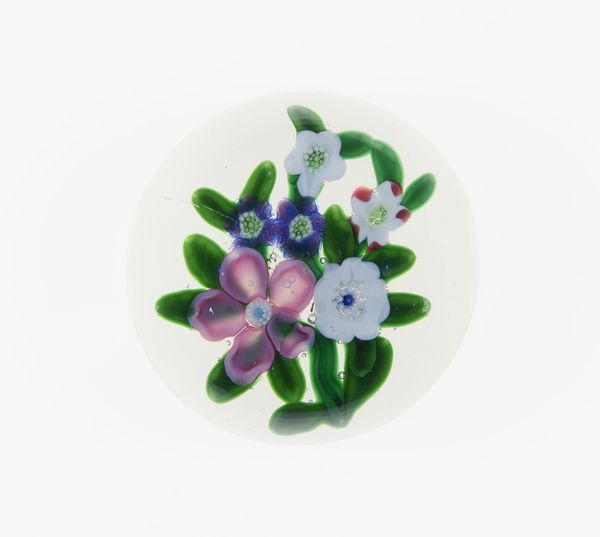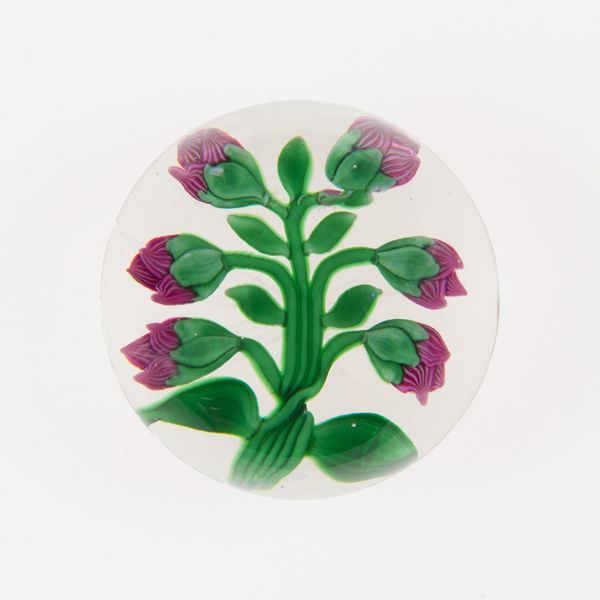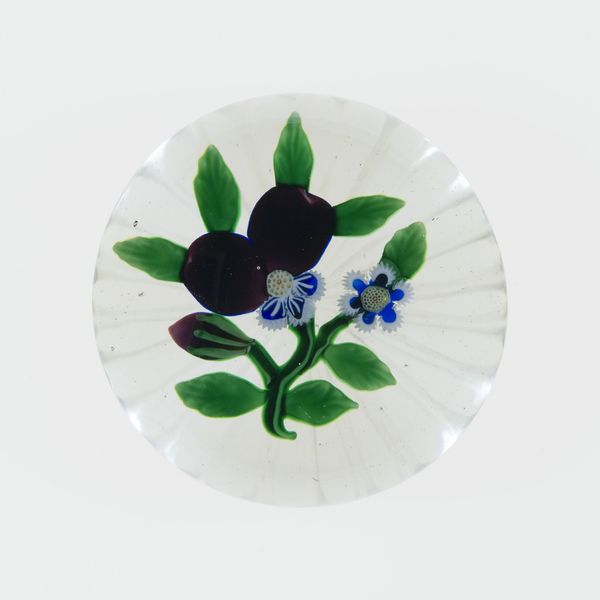
paper, glass
#
product studio photography
#
organic
#
paper
#
form
#
glass
#
plain flat background
#
decorative-art
Dimensions: 9.2 × 6.7 cm (3 5/8 × 2 5/8 in.)
Copyright: Public Domain
Editor: We're looking at a 19th-century glass paperweight, made by the Clichy Glasshouse, which is held at the Art Institute of Chicago. I’m immediately drawn to the intricate flower design inside. It's encased in this milky white glass and it's deceptively simple, but captivating. What's your take on it? Curator: It's a seemingly humble object, but it speaks volumes about 19th-century aspirations. These paperweights became immensely popular as status symbols within the burgeoning middle class. They reflect a desire for accessible beauty and a fascination with the natural world, brought indoors and, quite literally, preserved. How do you think its presence in a museum changes our relationship to it now? Editor: Well, in the museum, it feels less like a functional object and more like art...worthy of close study, a showcase of craftsmanship. I almost forget it was used to hold down papers. Curator: Precisely! That transition highlights the shifting boundaries of art. Mass-produced decorative objects were often excluded from the “high art” canon. Examining their popularity helps us understand evolving tastes, the impact of industrialization on art production, and the social role these objects played in everyday life. What do you make of its pristine, almost clinical presentation here? Editor: It makes me consider how context influences perception, stripping away daily use to highlight beauty. I’m seeing the decorative flower inside more clearly. Curator: Indeed, the display aesthetic contributes to the object's elevated status within the museum setting, altering its intended reception. Thanks for making me see its appeal beyond a historical record. Editor: Thank you, now I understand that art isn't just something hanging on a wall, it also appears in our hands!
Comments
No comments
Be the first to comment and join the conversation on the ultimate creative platform.
